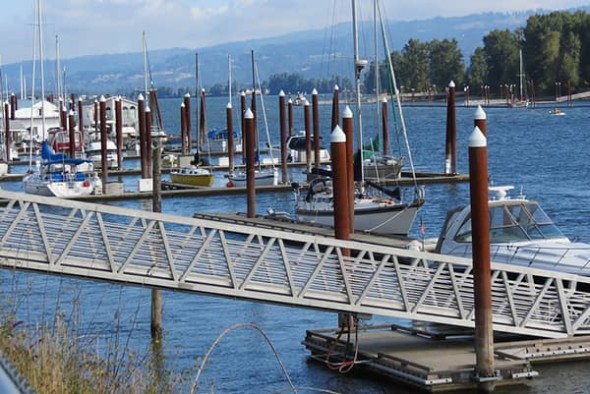Where Our Energy Comes From: Columbia County
Posted on March 10, 2021 by Will Gehrke
Tags, Energy

Where does our energy come from? Here at CUB, much of our work is predicated on the belief that shedding light on this question for utility customers is good for their consumer interests. Some readers may be surprised to find out that Columbia County has long been integral to Oregon’s energy economy. In the 1970s and ’80s, Columbia County was home to Oregon’s only nuclear power plant, Trojan Power Plant, as well as natural gas production fields in Mist, Oregon. Today, Columbia County is home to several Portland General Electric (PGE) power plants and NW Natural’s primary natural gas storage facility. The favorable geography of the county has made it a natural fit to host much of northwest Oregon’s critical energy infrastructure.
Columbia County is named for the Columbia River, which forms the eastern and northern borders of the county. PGE owns and operates three natural gas power plants on the banks of the Columbia River in Clatskanie, Oregon. These plants are located on the site of the Beaver Ammunition Storage Depot, which was used as a port for ammunition during World War II and the Korean War. Clatskanie’s port is also known as Port Westward.
Port Westward is well suited for power plant production due to its proximity to natural gas pipelines and water. The oldest of the three PGE plants, Beaver power plant, was constructed in the 1970s. In the wake of the 1970s energy crisis, in keeping with American policymakers’ goal of increasing US energy independence, many efforts were made to diversify the country’s energy resources. The Beaver plant was designed to be able to run on diesel, fuel oil, and natural gas. PGE also operates two modern power plants in Clatskanie: Port Westward I and Port Westward II. These natural gas power plants are used to meet electricity needs, but they are also used to support the provision of wind power. Wind power is only generated when the wind is blowing – but energy providers need to balance supply with demand at all times, so Port Westward I and II are used to fill in the gaps when wind production is inconsistent.
NW Natural owns and operates the Mist Gas Storage facility in Mist, Oregon. The Mist facility was constructed from four depleted natural gas production reservoirs. Natural gas utilities deliver energy to thousands of customers whose energy needs, such as space heating requirements, change significantly on a seasonal basis. Mist is usually refilled from April through September and drawn down between October and March. Natural gas storage enables NW Natural to provide reliable gas service to customers. During periods of high gas usage in the region, NW Natural uses the Mist storage facility to economically meet customer demand and avoid congestion on natural gas pipelines. NW Natural also operates a separate natural gas storage facility, known as North Mist, for PGE customers. PGE uses North Mist to store the fuel for its natural gas plants in case of a pipeline interruption, and to economically obtain natural gas for power production.
In short, Columbia County is home to several natural gas infrastructure projects due to its favorable geography. Portland General Electric built several power plants in Clatskanie, Oregon due to development space being available at Port Westward, with convenient access to water as well as natural gas pipelines and transmission. Additionally, the land was flat and already well suited to industrial processes, and the county was invested in finding a use for it. NW Natural also developed the Mist Storage Facility in Columbia County because depleted natural gas wells existed in the space, and were conducive to natural gas storage development.
To keep up with CUB, like us on Facebook and follow us on Twitter!





03/10/21 | 0 Comments | Where Our Energy Comes From: Columbia County